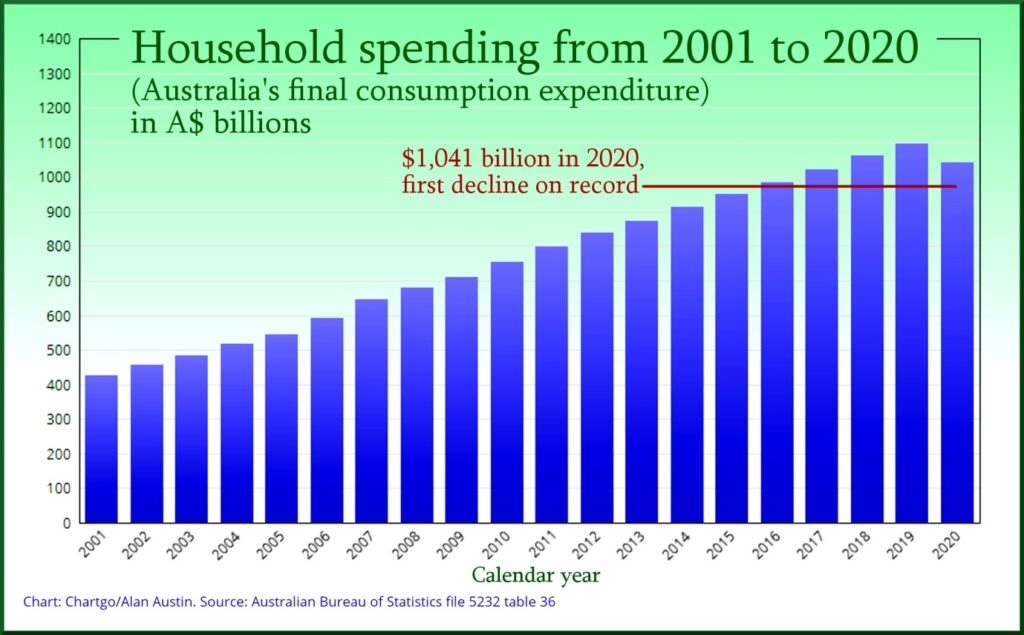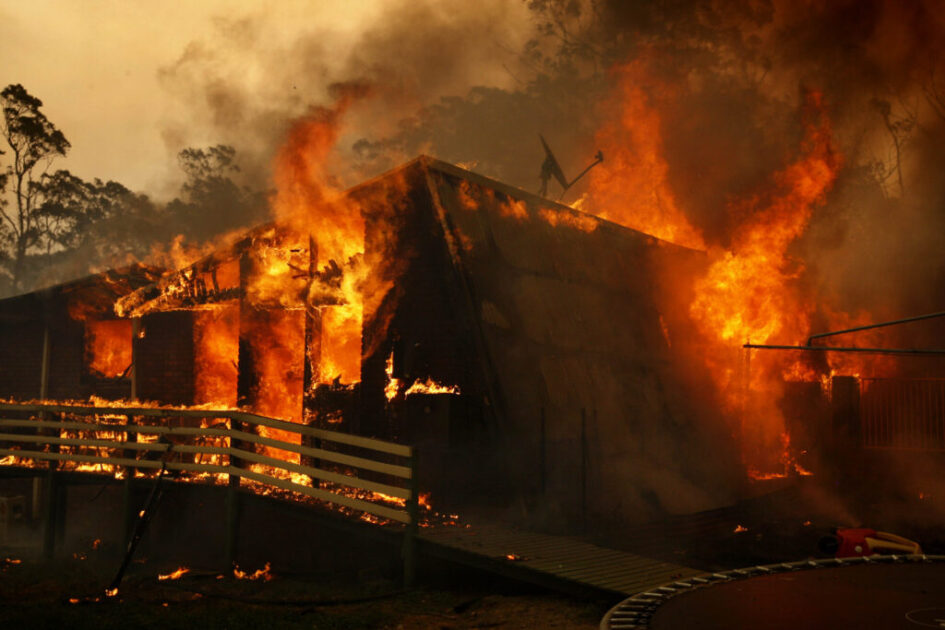By Alan Austin: Independent Australia.
Virtually every new data release confirms Australia’s economic demise under Prime Minister Morrison and Treasurer Frydenberg. Alan Austin updates the tally of disastrous outcomes.
INFRASTRUCTURE INVESTMENT IS at an all-time low. As is Australia’s net worth and its global ranking on economic growth. Tax-free corporate profits are at an all-time high.
The following fresh records of economic failure follow the first ten documented last month.

Morrison Government sets records in economic mismanagement
11. Household spending decline
For the first time, Australia’s ever-growing population spent less last year than the year before. This has never happened since the Bureau of Statistics (ABS) began tracking this in 1989 and probably not since the Great Depression of the 1930s.
Household consumption fell from $1,095 billion in 2019 to $1,041 billion in 2020, despite booming corporate profits and the Morrison Government handing out squillions to its mates. That was even lower than the $1,063 billion spend in 2018.

12. Record corporate profits untaxed
More than 140 big Australian and foreign companies – income above $100 million – reported $10.7 billion in taxable income in 2018-19, but paid no company tax. That is up from 129 corporations with untaxed profits of $4.5 billion in 2013-14.
13. Students forced to work part-time
Through most of the Howard, Rudd and Gillard years, full-time students required to work fluctuated between 16% and 20.9% of the population. It hit a fresh record high of 22.4% in June 2018, then broke 23% in March this year. This peaked at 24.8% in May.
14. Full-time female students obliged to work part-time
This is much worse for women than men. The highest percentage of men aged 15 to 24 in full-time studies obliged to earn a living was 21.5% in June this year. The highest for women was 29% in May.
Inevitably this compromises the academic achievement of young Australians.
15. Seniors in their 70s and 80s forced back to work
From 2011 to 2016, the percentage of elderly citizens in the workforce stayed steady at around 12%. This surged in 2018, reaching an all-time high last February of 15.6%.
The principal cause is poverty due to declining pensions and rising costs.

16. Record size of the public service
ABS data shows government jobs steady at around 1.5 million from 2014 until mid-2016. That was between 12.3 and 12.9% of the workforce.
By early 2017 this had crept above 1.7 million, despite promises to “trim the public service”. It peaked in August 2020 at 1.97 million, up to 15.3% of all workers.
17. Productivity stalled
A streak of 17 quarterly rises in productivity began in June 2011 under former Prime Minister Julia Gillard. This ended in mid-2015, after two failed Coalition budgets.
Since September 2018, under Morrison, six out of 11 quarters have recorded a productivity decline. This has not happened since 1991. Twice under Morrison productivity fell relative to the level three years earlier. This has happened only once before, in 1990.

Uniform resource rent tax for a better future
18. Lowest infrastructure investment
From the earliest ABS data in 1986 until the Coalition was elected in 2013, the percentage of the nation’s gross domestic product (GDP) spent annually on construction averaged 6.6%. The highest was 10.04% in 2013, the lowest was 4.83% in 2001.
This hit a new all-time low in Morrison’s first year, 2019, of 4.72%. It fell again last year to 4.48% and slumped to a fresh nadir of 4.27% this year.
That this has happened during a recession – when infrastructure spending is often the major strategic remedy – is inexcusable.
19. Worst collapse of net worth
Net worth was a positive value for several years before the Global Financial Crisis (GFC) necessitated extensive borrowing. Under Labor, net worth fell to a low of negative $252 billion in 2011-12, which was 16.8% of GDP. It recovered substantially in 2012-13 to 13.5% of GDP, and was forecast to return to positive values soon thereafter.
Borrowings deepened under the Coalition, however, and net worth continued to plummet disastrously. This is despite the global boom and surging exports.
New record lows in net worth were reached in 2015, 2016, 2019 and 2020. The all-time worst was in January this year at negative $781.1 billion, or 39.2% of GDP.

Australia’s economy: From the pinnacle to the poorhouse in seven years
20. Lowest ranking on economic growth
As shown last week, Australia’s quarterly GDP growth collapsed in the second quarter this year to rank 31st among the 34 developed OECD member countries which had reported to that time.
Since then, two more countries have released their data. Australia now ranks 33rd out of 36, the lowest in history. In 2009, under Labor, Australia had the highest ranking in the OECD.
These add to the list of “worst-ever” outcomes IA began last month:
- Australia’s worst recession since records have been kept;
- Greatest waste of any government program on record;
- Deepest budget deficits on record;
- Greatest increase in gross debt since World War II;
- Greatest increase in net debt since World War II;
- Lowest rate of wages growth since records have been kept;
- Record profits as a percentage of national income;
- Lowest rate of company tax and fringe benefits paid relative to profits on record;
- Worst sustained retail slump since records have been kept; and
- Worst manufacturing collapse on record.
An indictment on the Government and mainstream media
This series confirms three realities. First, the Morrison Government is generating the worst economic outcomes on record for most Australians. Second, Australia should still have the world’s best economy, as it did under Labor. And third, Australia’s mainstream economics reporters, with a few exceptions, refuse or fail to report these results accurately.https://www.youtube.com/embed/6NN8f2tFZvM?rel=0&wmode=opaque
Alan Austin’s defamation matter is nearly over. You can read the latest update here and contribute to the crowd-funding here. Alan Austin is an Independent Australia columnist and freelance journalist. You can follow him on Twitter @alanaustin001.
Related Articles
- Wren’s Week: Government negligence is dooming our nation
- Morrison Government sets records in economic mismanagement
- Government downplays COVID-19 case numbers to open up sooner
- Morrison delivers for foreign corporations: Lowest wage rise on record
- The pandemic is your fault according to the Coalition



1 Pingback